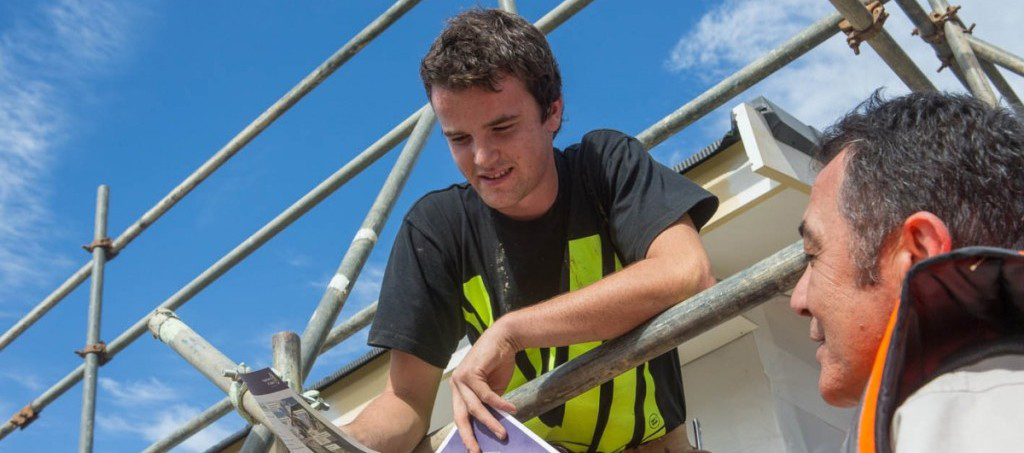Answering your H&S questions
01 Aug 2013, Prove Your Know How, Safety

The Preventing Falls from Height project is not just about taking enforcement action against unsafe work practices. Health and safety inspectors spent many hours engaging with the industry to ensure construction workers and business owners understand the Best Practice Guidelines for Working at Height.
Last year, inspectors conducted 1,700 visits and seminars at workplaces and in partnership with trade suppliers.
These events are the perfect opportunity for participants to ask their local health and safety inspectors about safety guidance and practices – a selection of the most frequently asked questions (FAQs) is printed below and three more will be featured next month. The full list is available at dol.govt.nz/prevent-falls/information.asp
Q:1 Can I walk on the top plate without any fall protection?
No. At no time is any person to stand on or work from an external wall top plate without suitable fall protection. This must be considered as part of your planning for a safe approach to working at height.
If prefabrication of the roof structure is not possible and trusses are assembled in situ, a safe working platform (such as scaffold) should be provided around the perimeter of the framing.
Measures to prevent or mitigate the distance of a fall must also be provided internally. This can be achieved by providing a working platform immediately beneath the underside of the trusses. Either conventional scaffolding, or (if appropriate) proprietary decking systems can be used. The use of safety mesh or other safety-rated products that can span across the top of the framing can also be used.
Alternatively, if a safe internal working platform cannot be provided, safety nets can be used if a safe clearance distance below the net and a suitable fixing point can be achieved. Other soft landing systems, such as bean bags or air bags, may also be used. In some circumstances, safe clearance distance can be achieved by locating the bracing of the framing on the outside of the structure.
More information can be found in factsheet The safe installation of roof trusses.
Q 2: Do I have to use edge protection on a single-level dwelling?
Yes. Single-storey dwellings require the same level of protection as two-storey dwellings and the same process must be followed to establish appropriate control measures. For example, where edge protection is the appropriate control measure required, it should be installed on a single-level dwelling in the same way as on multi-level dwellings.
Refer to factsheet Be safe working on roofs.
Q3: Is it alright for me to use my saw horse as a working platform?
Generally saw horses or saw horses with planks are not recognised as suitable work platforms, as they have not been designed for this purpose. The exception to this rule would be if the equipment was purposely designed and manufactured for this use and meets a relevant NZ Standard.
There is a variety of access equipment on the market to make working at height safer. Your duty is to take all practicable steps to prevent any harm that would result from a fall.
Working from a work platform with a guardrail will offer far better far protection than one without. Focusing your attention on work above your head increases the risk of stepping off the board or platform and falling if you do not employ a guardrail.
Any work platform should be fit for purpose. There are two types of work platform:
- A proprietary (engineered) work platform constructed and used in accordance with the manufacturer’s instructions.
- A constructed work platform using construction materials and built by a competent person. (This is only to be considered if no alternative forms of work platform are readily available.)
Have a look around your local access equipment hirer or trade supplier for ideas on more appropriate equipment. Podium steps could be one option.
CONCLUSION
Your hazard assessment must consider the site-specific factors and arrive at a decision that is justified by your assessment.
For more information, refer to section 6.6 of the Best Practice Guidelines for Working at Height and the factsheet Temporary work platforms.
Doing nothing is not an option!
Other FAQs include:
- Is my three-step ladder still legal to use?
- What is the maximum height to which I can use my ladder?
- From what height do I have to use fall protection?
- Can ceiling battens be used as a method of fall protection?
- What training is required to erect my own scaffolding and to what height can I go?
- Do I need a rescue plan when working at height?
- How often does scaffolding need to be inspected?
- Can I use a safety harness when working alone?
The full list is available at dol.govt.nz/prevent-falls/information.asp or phone the Ministry on 0800 20 90 20.
Register to earn LBP Points Sign in



